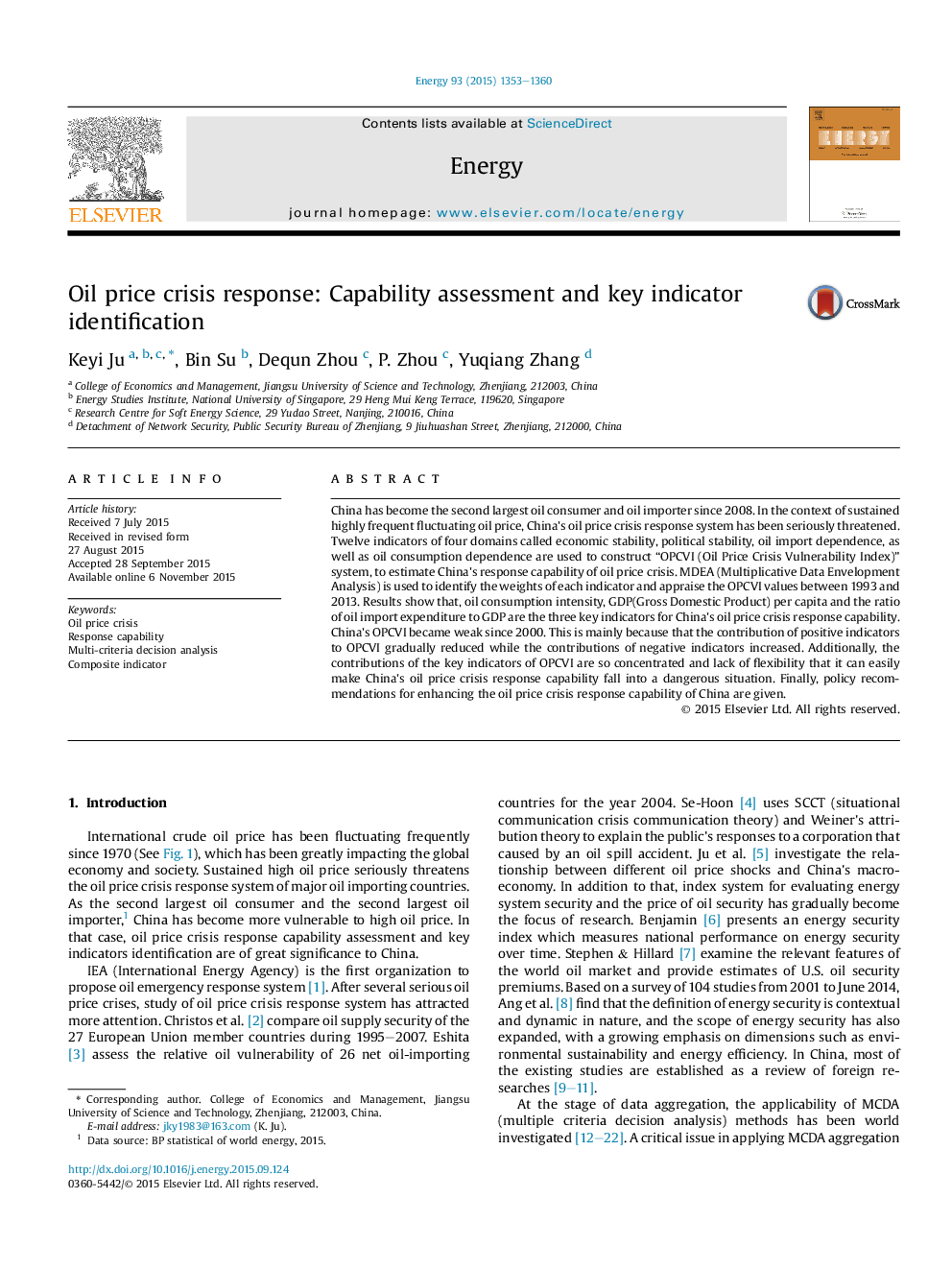| Article ID | Journal | Published Year | Pages | File Type |
|---|---|---|---|---|
| 1731579 | Energy | 2015 | 8 Pages |
•OPCVI (Oil Price Crisis Vulnerability Index) is proposed to estimate China's response capability of oil price crisis.•Three key indicators which determined China's OPCVI values are found.•China's response capability to oil price crisis became weak since 2000.•The contributions of key factors to OPCVI are concentrated and lack of flexibility.
China has become the second largest oil consumer and oil importer since 2008. In the context of sustained highly frequent fluctuating oil price, China's oil price crisis response system has been seriously threatened. Twelve indicators of four domains called economic stability, political stability, oil import dependence, as well as oil consumption dependence are used to construct “OPCVI (Oil Price Crisis Vulnerability Index)” system, to estimate China's response capability of oil price crisis. MDEA (Multiplicative Data Envelopment Analysis) is used to identify the weights of each indicator and appraise the OPCVI values between 1993 and 2013. Results show that, oil consumption intensity, GDP(Gross Domestic Product) per capita and the ratio of oil import expenditure to GDP are the three key indicators for China's oil price crisis response capability. China's OPCVI became weak since 2000. This is mainly because that the contribution of positive indicators to OPCVI gradually reduced while the contributions of negative indicators increased. Additionally, the contributions of the key indicators of OPCVI are so concentrated and lack of flexibility that it can easily make China's oil price crisis response capability fall into a dangerous situation. Finally, policy recommendations for enhancing the oil price crisis response capability of China are given.
